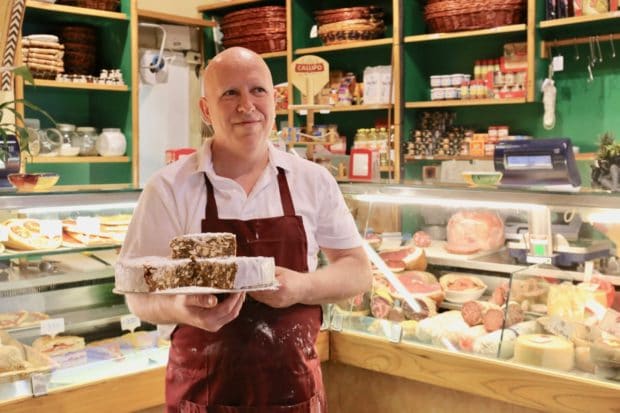Pitigliano Italy is a picturesque town located in southern Tuscany, in the province of Grosseto.
The iconic cliffs of Pitigliano Italy and nearby Sovana and Sorano have inspired visitors for centuries.
Looking for a picturesque historic village to explore in the heart of Tuscany? A visit to Pitigliano Italy offers cute cobblestone streets, an ornate cathedral, two richly decorated historic museums and bustling local restaurants.
Those keen to explore Tuscany’s unique Jewish history should visit Pitigliano Italy on a pilgrimage. The quaint Old Town is known as Little Jerusalem, for the historic presence of its ancient Jewish community.
Save this story to Pinterest so you can look at it later!

History of Pitigliano Italy
Pitigliano and the surrounding region were inhabited in Etruscan times but the first mention of the town dates back only to 1061.
In the early 13th-century Pitigliano Italy belonged to the Aldobrandeschi family. By the middle of that century it had flourished so extensively that it was the capital of the region.
In 1293 rule of the land passed to the Orsini family, launching the start of a 150 year conflict with Siena.
History buffs love visiting Pitigliano Italy today as it offers a chronological Italian history lesson. The town is still home to archaeological treasures from its former rulers: Etruscan tombs, the Roman origins of the town’s original name Gens Petilia, and the Lorraine family who modernized with urban development.
Starting in the 1500s, Pitigliano Italy was the home of a growing Jewish community, who felt safe here thanks to the Orsini family.

Getting to Pitigliano Italy
If you’re planning a trip to Pitigliano Italy you’ll need to ensure you have a car as the region is rural and is not serviced by regular train or bus service. It takes approximately 3 hours to drive from Florence, or a shorter 2 hour journey from Rome.
From Florence: Take A1 motorway towards Rome, get off at Orvieto, take the SS71 in the direction of Bolsena, followed by the SS2 Cassia and SS74 in the direction of Pitigliano.
From Rome: Take the Rome-Civitavecchia highway, then follow the signs for Grosseto-Livorno, exit at Albinia, and follow the signs for Manciano and then for Pitigliano.
You May Also Enjoy Reading…
- Saturnia Hot Springs: Wellness Spa Holiday in Tuscany
- Agriturismo Volterra: Book the Best Farmstay in Tuscany
- Travel to Florence, Italy
- Florence in a Day: 24 Hours in Tuscany’s Culture Capital
- Tuscan Honeymoon: Best Romantic Holiday in Italy
- Tuscan Food: 20 Must-Try Dishes and Drinks
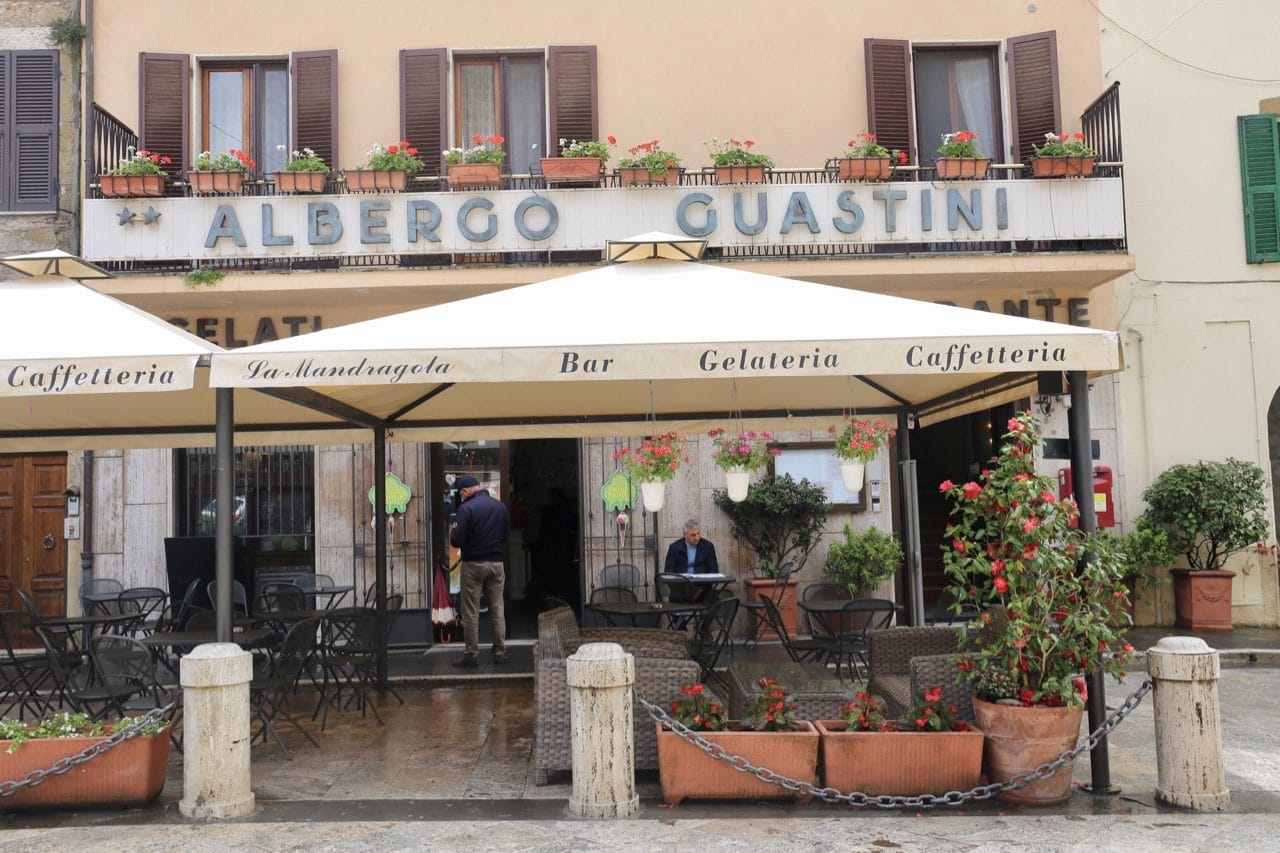
Accommodation in Pitigliano Italy
The pretty hill top town in Tuscany is a great place to book a hotel as a home base for a few days. You can enjoy several day trips from Pitigliano Italy by visiting nearby villages such as Sovana, Sorano and Saturnia.
Hotels in Pitigliano offer an eclectic mix of historic boutique hotels and intimate B&Bs. We’ve included helpful links to the best hotel booking sites so you can compare prices and availability.
- Albergo Guastini 3 STARS : A historic hotel located directly in front of the city’s main entrance gates.
Expedia | TripAdvisor | Agoda | HotelsCombined | Hotels.com
- La Posta Regia 3 STARS: Townhouse style self-catering accommodation at Piazza della Repubblica.
Expedia | TripAdvisor | Booking.com | Agoda | HotelsCombined | Hotels.com
- Dimora Montebello Vintage House 3 STARS: This river-front vacation home boasts a fireplace, kitchen, two bedrooms, living room and dining room.
Expedia | Booking.com | Agoda | HotelsCombined
- Relais Valle Orientina 3 STARS: A boutique hotel located just outside of Pitigliano featuring a full-service spa, golf course and restaurant.
Expedia | TripAdvisor | Booking.com | Agoda | HotelsCombined | Hotels.com

Things To Do in Pitigliano Italy
You can easily visit Pitigliano Italy in a day. But we suggest booking your accommodation here so you can explore the surrounding villages of Sovana, Sorano and Saturnia over two or three days.
If you only have time to visit Pitigliano Italy on a day trip, we suggest parking your car outside of the town’s main entrance gate.
Spend your morning walking through the cobblestone streets of the picturesque village in Tuscany. Explore the town’s two historic museums, richly decorated cathedral, and enjoy a pizza lunch at Il Noce Trattoria. In the afternoon take your time to visit the Jewish ghetto and explore the Synagogue museum.
If you’re a photographer looking to snap a pretty panorama, enjoy a short stroll outside of the Old Town. Turn right and walk down the road about 200 metres and you’ll find a jaw-dropping view of Pitigliano Italy’s skyline. We guarantee the place will take your breath away!

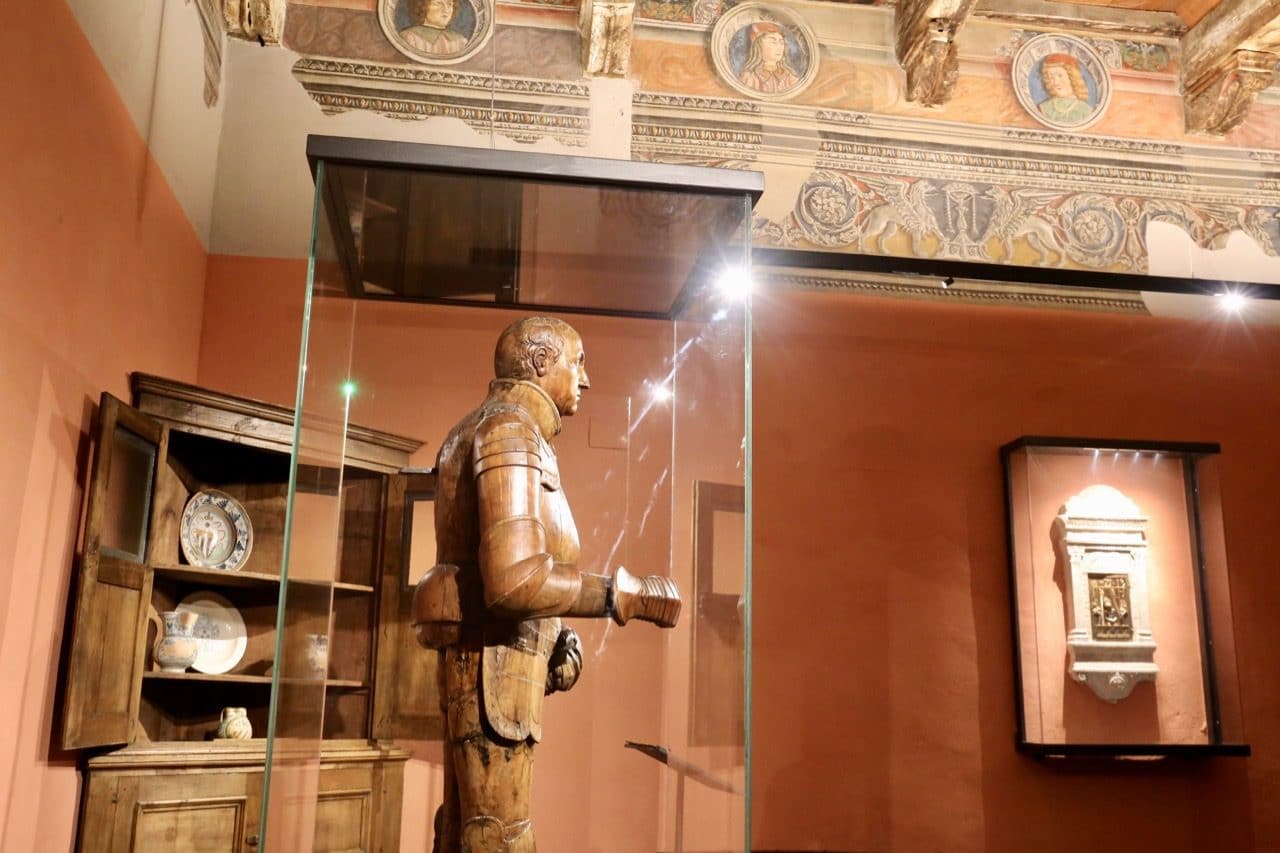
Museum of Palazzo Orsini
Piazza Fortezza Orsini, 39-0564-616074
Housed in a 14th-century palace in Pitigliano Italy, the Museum of Palazzo Orsini’s 21 rooms showcase a collection of sacred Tuscan art.
The construction of the ancient building began in the 12th-century by the Aldobrandeschi family. In 1312, it passed to the Orsini family, who fortified its walls with three circular towers.
Pitigliano Italy’s best museum showcases works of silver and gold, coins, wooden sculptures, panel and canvas paintings, manuscripts, medieval books and fine textiles.
Be sure not to miss the palace’s Room of the Loggette, featuring a cycle of portraits of the Orsini family. You’ll also find a series of paintings depicting the Madonna and Child by Renaissance master Jacopo dalla Quercia.


Civic Archaeological Museum
Piazza della Fortezza Orsini, 39-0566-906295
The Civic Archaeological Museum is located directly across from Museum of Palazzo Orsini.
The museum consists of over a thousand artifacts from the necropolis of Poggio Buco, where Adele Vaselli conducted excavations on her own land from 1955 to 1960. The collection includes a parade of vases and set of Etruscan-Corinthian pottery vessels.
Pitigliano’s Civic Archaeological Museum was completely renewed in 1999, including new objects from recent excavations in the area. You can also find artefacts from as far back as the Bronze Age.
While strolling through the museum you can peak into the warehouse and workshop. Enjoying watching as staff meticulously restore ancient ceramics.


Il Noce Trattoria
Piazza Giuseppe Garibaldi, 39-0564-615125
Located in the heart of Pitigliano Italy’s Old Town, Il Noce Trattoria is one of the best restaurants and pizzerias in town.
Local’s “in the know” enjoy feasting on perfectly scorched pizzas and pretty bowls of pici pasta. It would be easy for those on a day trip to totally miss the place as the restaurant is hidden from view.
Head to Piazza Giuseppe Garibaldi and look for the signs for Il Noce Trattoria. Arrows will point you down a set of stairs and along a hidden hallway, which leads to the restaurants spacious outdoor patio.
If the weather is cool, skip inside the front door and you’ll be seated in the restaurants cavernous dining room. The space was formerly a wine cave, and at night it’s one of the most romantic restaurants in Pitigliano, thanks to the candle light that flickers on the stone ceiling.
Il Noce Trattoria’s menu features a long list of pizzas, pastas and salads, all of which pair perfectly with the sommelier’s affordable selection of local wines.

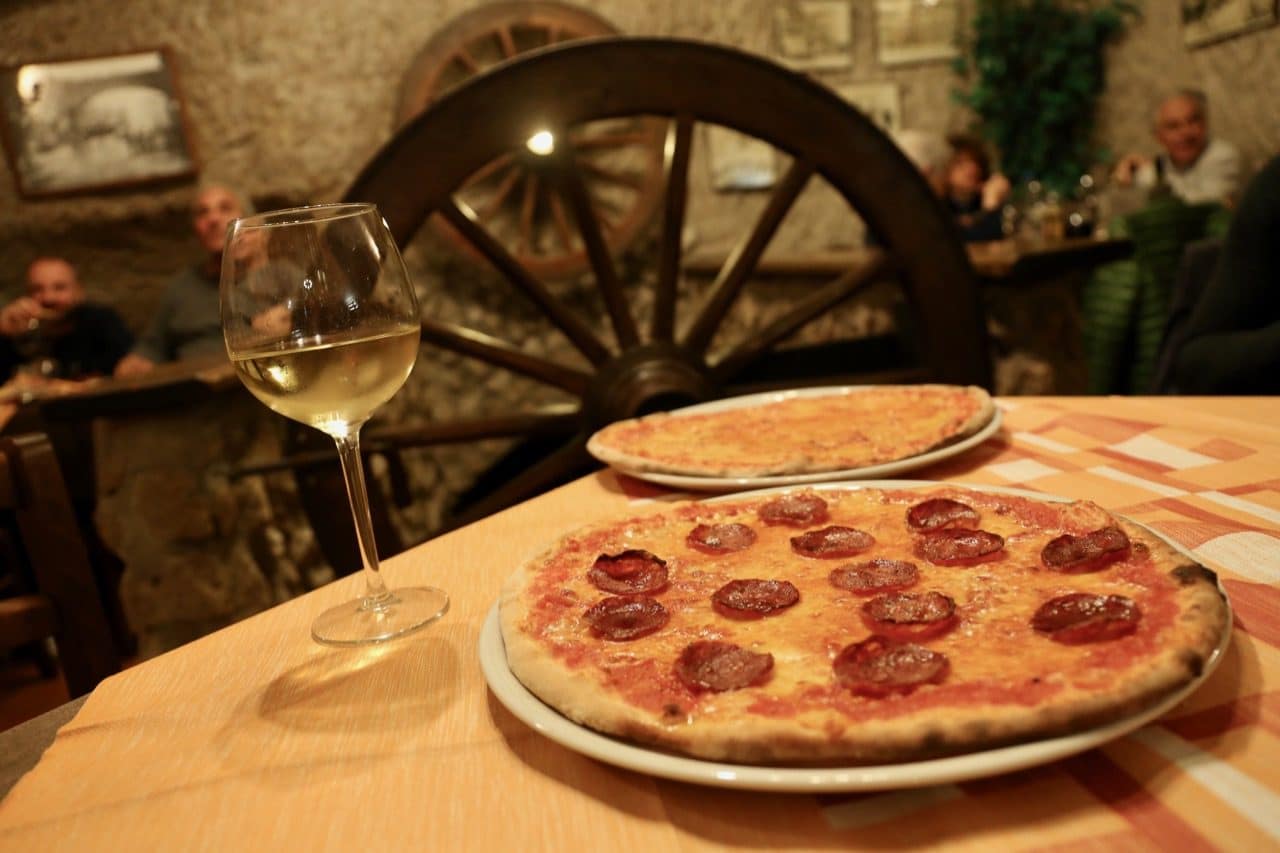
Al Villano Monument and Fountain of the Seven Spouts
Two of the most photographed monuments in Pitigliano Italy are Al Villano and Fontana delle Sette Cannelle. The two landmarks are located on opposite ends of Piazza Fortezza.
The Villano, is a bronze statue by artist Mario Vinci that celebrates the peasant roots of the village. It also pays homage to the town’s ancient means of travel, a sturdy donkey. The monument is accompanied by a plaque featuring a poem by Nerio Persi.
Take a short walk down the street and you’ll find Pitigliano Italy’s famous frothing fountain. It’s located on the southern side of Piazza della Repubblica.
Built in 1545, the Fountain of the Seven Spouts appears as a monumental work of public art. Thanks to the presence of the head of the aqueduct, from which it draws water, spouts shoot fresh water into an ornately decorated basin. Look closely and you’ll notice the sculptures are made in different eras and styles, each depicting the head of a different animal.
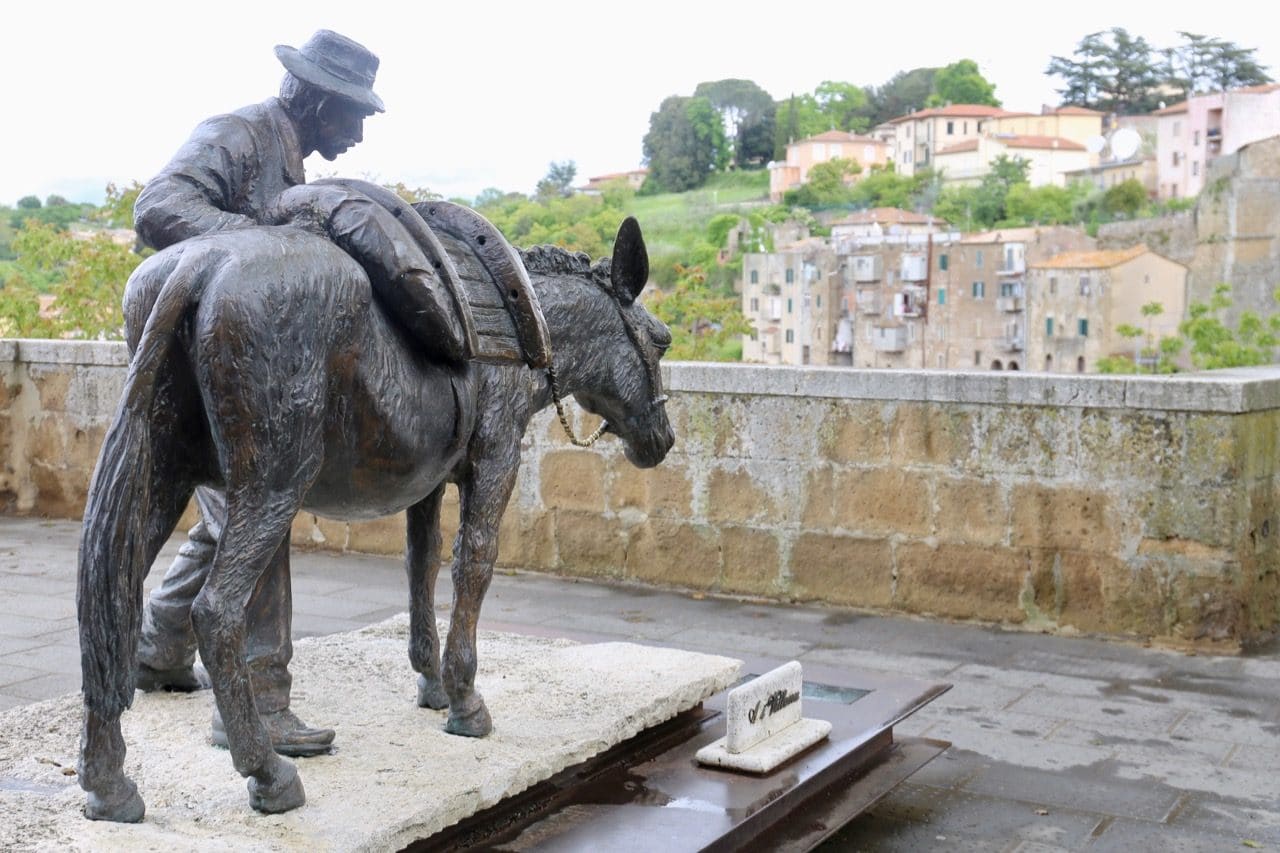
Pitigliano Cathedral
Also known as Santi Pietro e Paolo, Pitigliano Cathedral serves as the region’s parish church. It was built in medieval times, restructured during the 16th-century and then greatly modified over time.
Today, Pitigliano Italy’s Cathedral features an 18th-century Baroque interior and exterior. There is also a 35 foot tall Romanesque bell tower, which was initially constructed for civil and military purposes. It was later incorporated as the cathedral’s campanile.
Take your time to inspect the façade, gabled with a beautiful Carrara marble bas-relief of the Assumption of Mary with St. Rocco and St. Francis.
The interior of the cathedral features a nave with two side chapels that contain paintings by local painter Francesco Zuccarelli.


Pitigliano Synagogue
Pitigliano Italy is most famous for its Synagogue and Jewish museum, giving the town the nickname, Little Jerusalem.
The Jewish community began to thrive here in the 16th-century. Jews under the rule of Count Niccolo Orsini IV were free to co-exist with Christians. Elsewhere in Italy the Jewish population were subject to harsh segregation rules.
Jews first moved to Pitigliano in the 15th-century, seeking refuge from Pope Paul IV, who in 1555 demanded ghettoization and other restrictions on their lives.
You May Also Enjoy Reading…
- Pisa Attractions: Explore Beyond The Leaning Tower
- Luxury Living at Grand Hotel Continental Siena
- Things To Do in Siena: A Comprehensive Guide
- Castello di Velona: Tuscany’s Best Luxury Spa Getaway
- Sorano Italy: An Ancient Medieval Hill Town in Tuscany

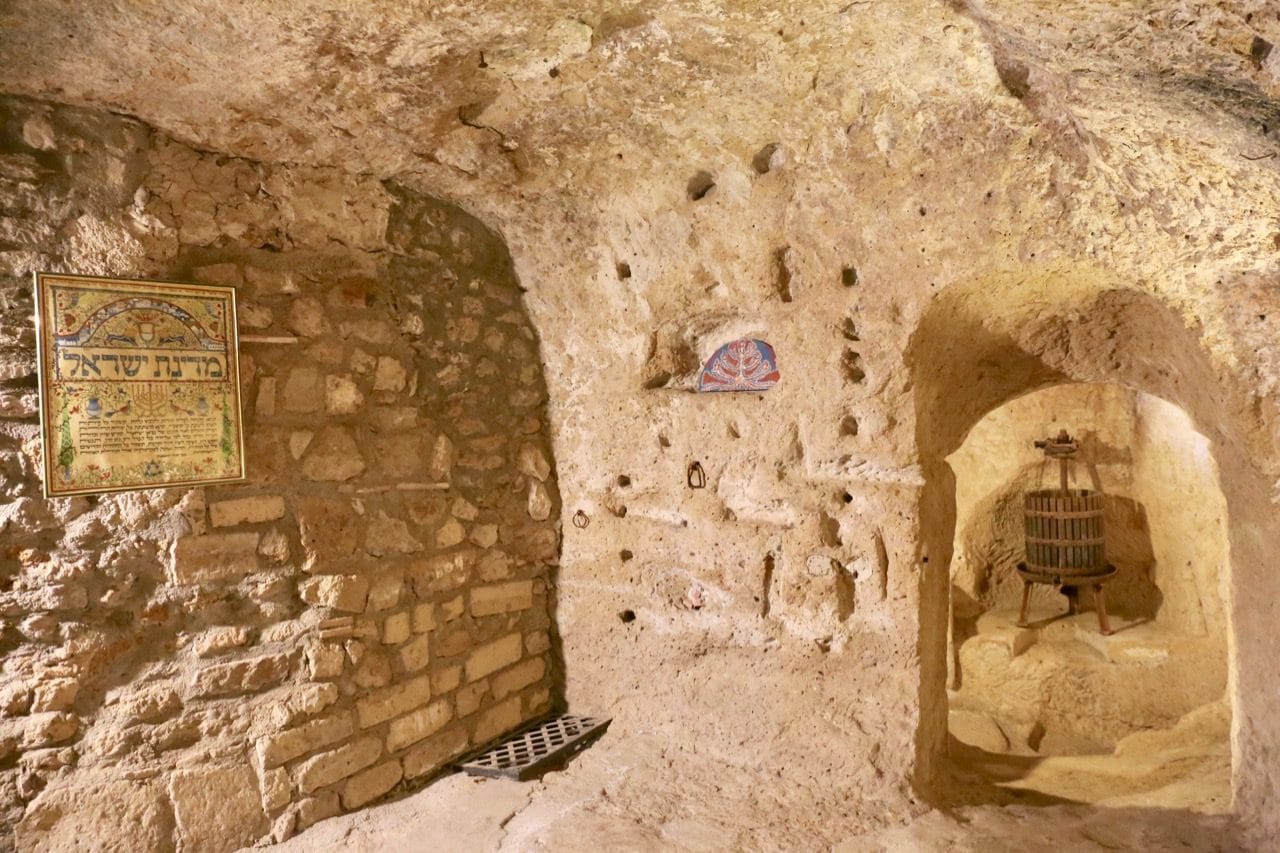
Today, Pitigliano’s Jewish Quarter is a must-see. While the jews were eventually driven out by 1938 when Fascist racial laws were applied. Today’s visitors can appreciate the town’s Jewish history by visiting a restored synagogue and museum.
Visitors can also explore a series of rooms where unleavened bread was baked, kosher wine was produced, kosher butchers served local grocery shoppers, and the baths used to ceremoniously purify women in the community.
Looking to enjoy a unique culinary experience that you can only have in Pitigliano Italy? Visit Panificio del Ghetto at 167 Via Zuccarelli, near the Synagogue. At this local shop you can snack on sfratti, a stick-shaped biscuit filled with ground walnuts, honey, nutmeg, orange peel all wrapped in dough.
The word “sfratti” is derived from “sfratto”, which translates to eviction. Legend has it that the Pitigliano police would hit Jews with rods to force them into the ghettos; the Jews subsequently transformed their pain into something we can eat and reflect on today.
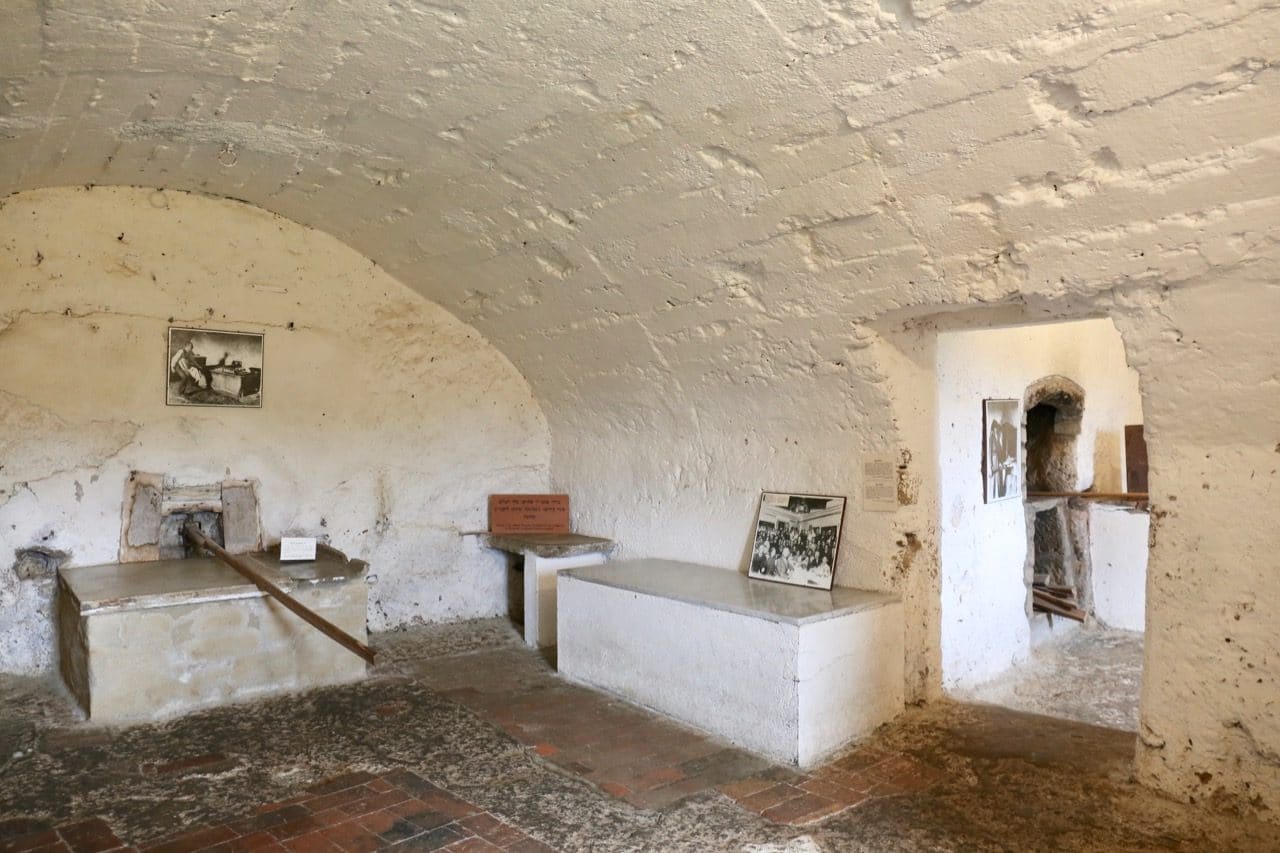
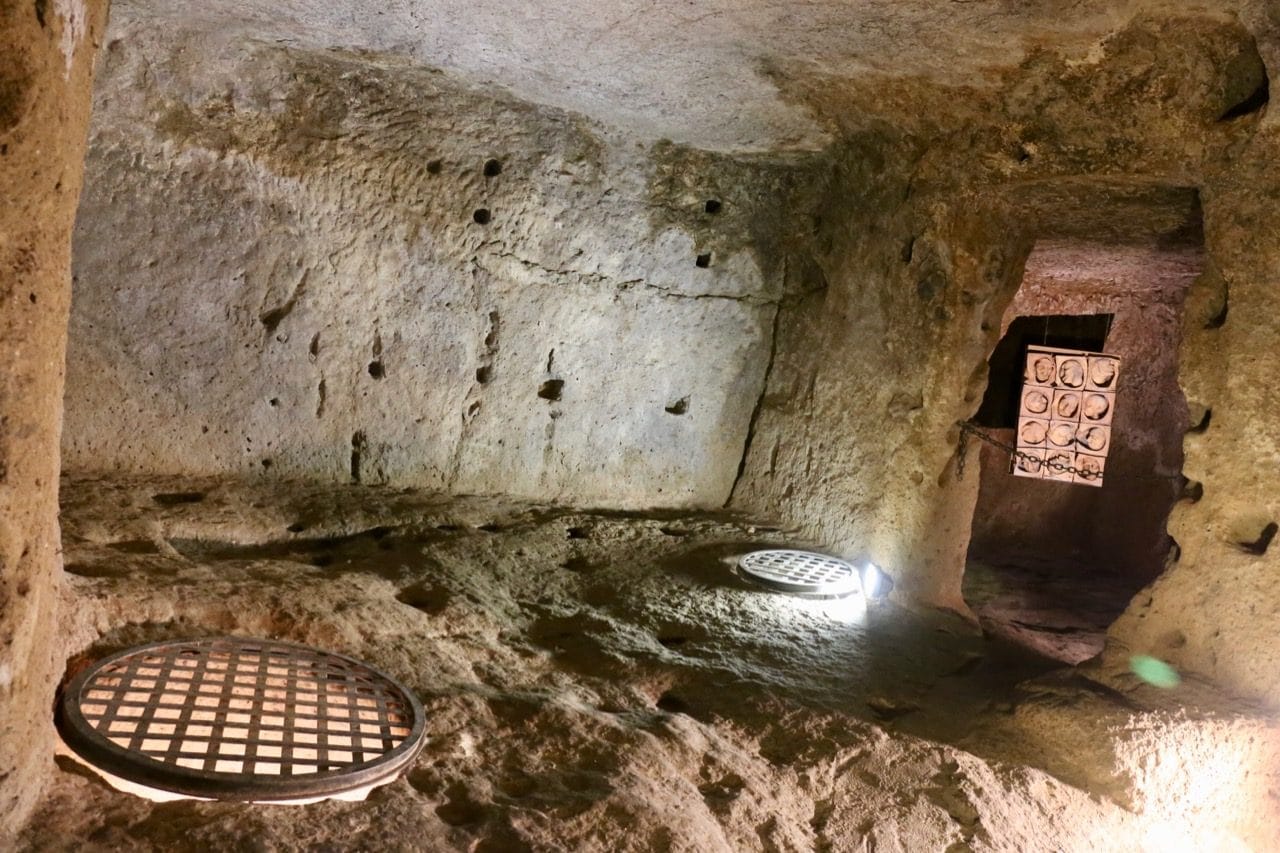
Review Our Travel Checklist When Planning Your Next Adventure!
Find the best flights on Skyscanner
Never travel without insurance! We suggest World Nomads comprehensive coverage as it includes over 250 adventure activities such as scuba diving, bungee jumping and surfing.
If you’re planning a road trip make sure to compare the best local car rental options.
Looking to book a tour or VIP experience on holiday? Book the best local tours on Viator.
Be sure to check your travel destinations electrical plug requirements in advance. If you travel often be sure to purchase a multi-region adaptor.
Whether you’re marching through a city or exploring a rugged rural landscape, it’s important to ensure you’re traveling with comfortable footwear. We suggest these comfortable walking shoes for urban adventures or these waterproof hiking boots when embarking on a hike holiday.
Capture your holiday on a quality camera. We suggest the pocket-sized Canon Powershot G7 or professional SLR we shoot with Canon EOS 6D.
Some of the links in this story use affiliate links. This means that if you book your accommodation through our site, Dobbernationloves will earn a small commission at no extra cost to you. Your support helps us to produce comprehensive content.
